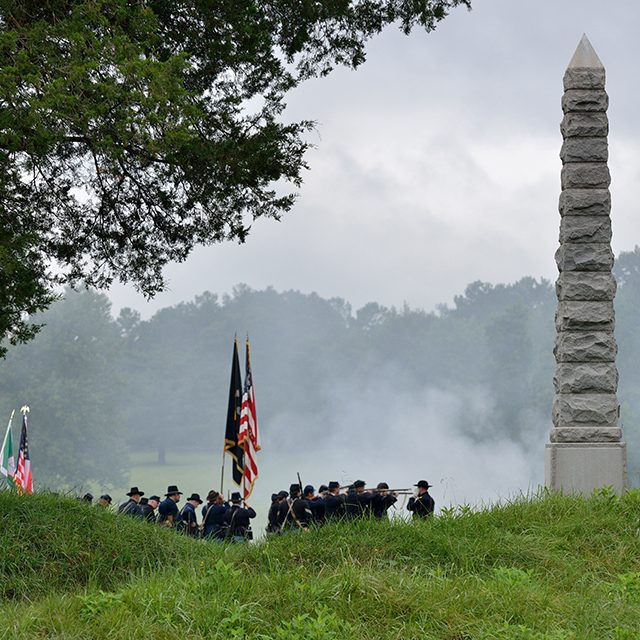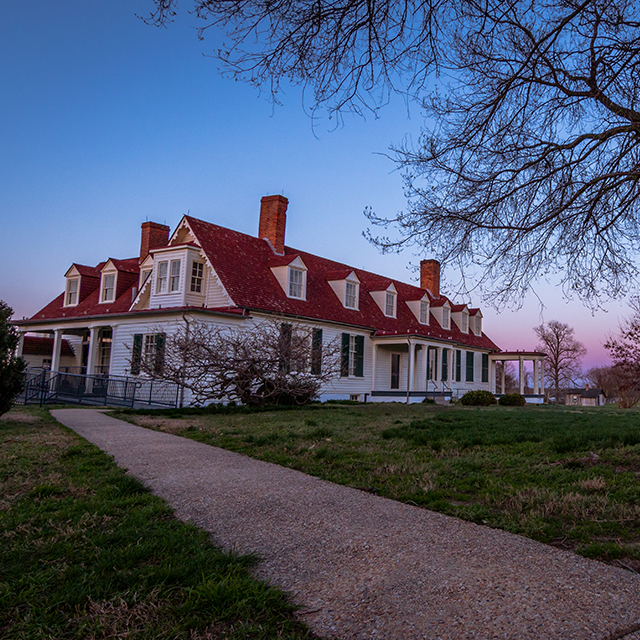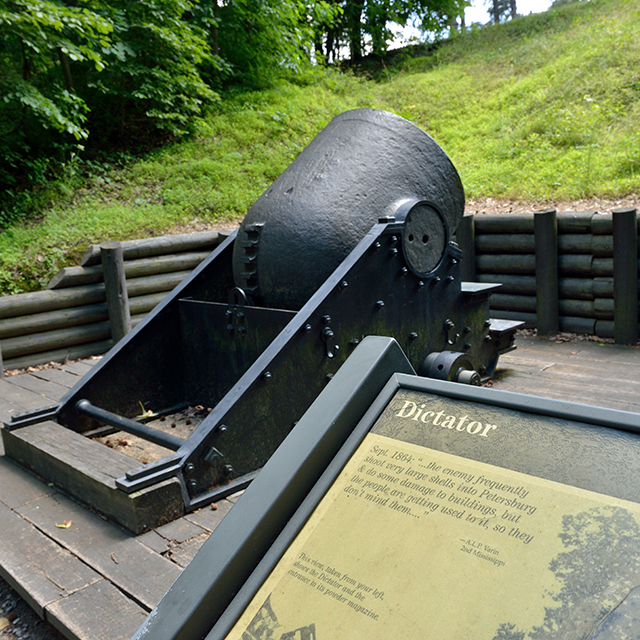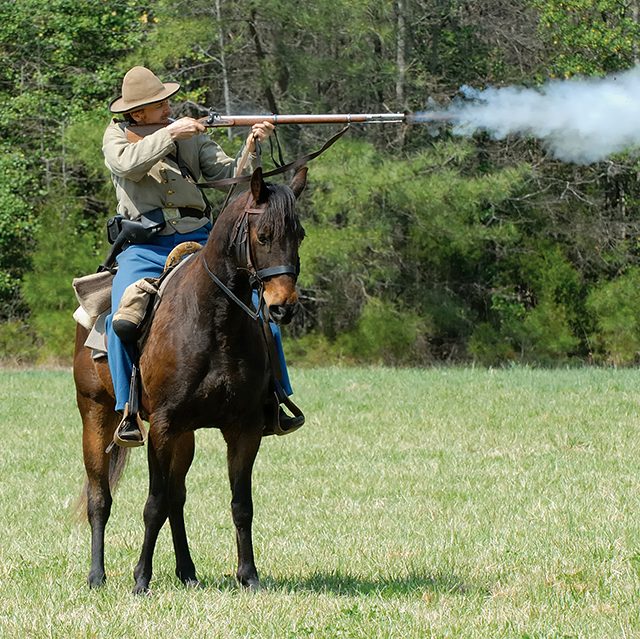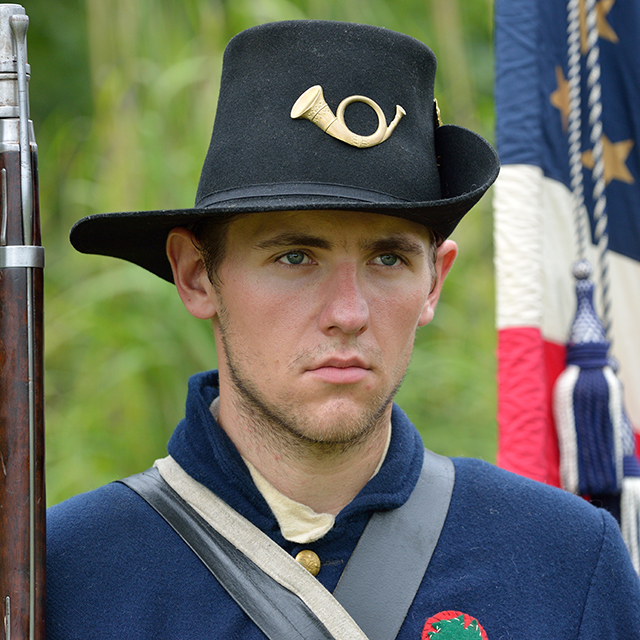Bringing the Siege of Petersburg to Life
Almost one quarter of the entire Civil War was fought around Petersburg as Generals Robert E. Lee and Ulysses S. Grant wrestled for control of the railroads and supply lines that the Confederacy desperately needed for survival. Petersburg National Battlefield tells the story of the nearly ten month siege that caused the collapse of Richmond and General Lee’s army.
The 2,700 acre park contains a 16-stop driving tour which takes visitors through all four units of the Battlefield: Grant’s Headquarters at City Point (present day Hopewell); the Eastern Front, where the initial assaults and the battles of the Crater and Fort Stedman occurred; the Western Front, where intense fighting continued as Grant’s Army encircled the city while struggling to destroy the last of Lee’s supply lines; and the Five Forks Battlefield, a battle in which the outcome would eventually lead to the Confederates’ retreat to Appomattox and Lee’s surrender.
General Grant’s Headquarters at City Point
While laying siege to Petersburg, Grant established his headquarters at City Point, a small port town at the confluence of the James and Appomattox rivers. Overnight, the town and adjacent Appomattox Plantation became one of the busiest ports in the world as hundreds of ships delivered food, clothing and ammunition. Huge warehouses built along the waterway stored food for 100,000 men and forage for 65,000 horses and mules. Seven hospitals covering an area of 200 acres could treat up to 10,000 patients.
While running the war from City Point, General Grant received many notable political and military visitors, including President Abraham Lincoln (visit walkinlincolnsfinalfootsteps) and General William T. Sherman. The most welcome visitors were his wife and son, who stayed with him in his cabin for the last three months of the siege.
Eastern Front Visitor Center and Driving Tour
The Eastern Front Visitor Center features exhibits and audio-visual programs that introduce the story of the siege and its impact on the course of the Civil War. A driving tour of the battlefields includes 13 separate sites with three contact stations along a 37-mile route. http://www.nps.gov/pete/planyourvisit/upload/PETEmap1.pdf Park staff will answer questions and provide information to help you make the best use of your time.
Battle of the Crater
A highlight of the Eastern Front driving tour is the scene of one of the war’s most spectacular events, the Battle of the Crater.
In an effort to punch a hole in the Confederate’s defensive fortifications and capture Petersburg, a Union regiment from a coal mining region of Pennsylvania dug a tunnel 510 feet long under a part of Lee’s line call Elliott’s Salient. On July 30, 1864 they lit the fuse and four tons of gun powder roared to life, instantly killing and wounding 278 Confederate soldiers and creating a crater 25 feet deep and 180 feet long. A Union infantry attack soon followed, but it immediately ran into trouble. Instead of skirting the hole, many of the unprepared and ill-led troops pulled up short and ran right into the still smoldering crater. A Confederate counter-attack forced more Federals into the “horrid pit” where they were shot, bayoneted and blown to bits by mortars. The Confederate lines held and the Union’s opportunity to shorten the siege was lost. General Grant said of the catastrophe at the Crater, “It was the saddest affair I have ever witnessed in the war.”’
A loop walking trail leads from the parking lot to the tunnel entrance then follows the Union mine shaft to Elliott’s Salient where the explosion and battle occurred.
Western Front Driving Tour
This driving tour explores where the fighting took place for the Petersburg and Weldon Railroad and the Union Army’s attempts to sever the South Side rail line. Poplar Grove National Cemetery, the final resting place of over 6,000 Federal soldiers who fell in battles from Petersburg to Lynchburg, is a highlight of the tour.
Five Forks Battlefield
By the spring of 1865, the last remaining supply line into Petersburg was the South Side Railroad. On March 29, 1865, Grant sent his forces on a westward movement to cut this major artery, knowing that it would cause Lee to abandon Petersburg and Richmond. Countering this move, Lee sent 10,000 troops under Major General George E. Pickett to an important road junction called Five Forks, which protected the railroad. On April 1, 22,000 Union troops under Major General Philip H. Sheridan attacked and defeated Pickett’s force at Five Forks. The fall of Richmond was assured. The next day Grant assaulted Petersburg, which along with Richmond was evacuated that night. Lee surrendered at Appomattox Court House just seven days later.
A short driving tour is available to explore the battlefield in more detail.
Did You Know?
The Union army was able to produce 100,000 rations of bread a day in bakeries it had built at City Point.
Equestrian
The National Park Service’s Petersburg National Battlefield offer miles of multi-use public trails available to horseback riders at the Eastern Front and at Five Forks Battlefield. Horse trailer parking is available.




